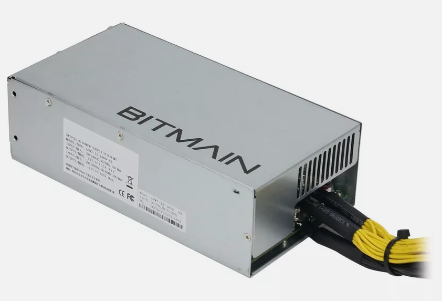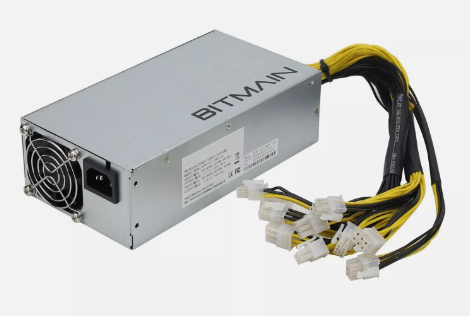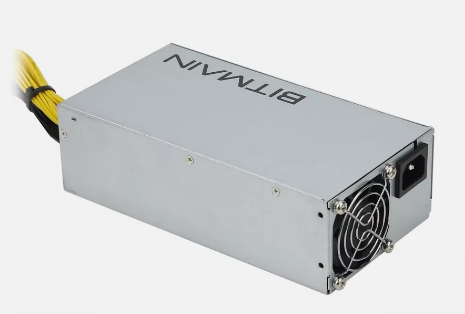How to troubleshoot Bitmain PSU APW7 1800W power supply issues?-Bitmain PSU APW7 1800w
December 28, 2024
Title: How to Troubleshoot Bitmain PSU APW7 1800W Power Supply Issues: A Comprehensive Guide
Introduction:
Cryptocurrency mining demands robust and reliable power infrastructure, and the Bitmain PSU APW7 1800W stands at the forefront of professional mining power solutions. As someone who has extensively worked with mining hardware, I understand the critical importance of maintaining optimal power supply performance. This comprehensive guide will walk you through the most common issues encountered with the APW7 1800W power supply unit and provide expert troubleshooting strategies to ensure maximum mining efficiency.
Understanding the APW7 1800W Power Supply
Before diving into troubleshooting, it’s crucial to recognize the unique capabilities of this power supply unit. The Bitmain APW7 1800W is not just another power supply – it’s a precision-engineered solution designed specifically for cryptocurrency mining environments. With its dual-voltage capability and versatile 10-cable connection system, this PSU represents the gold standard in mining power management.
Common PSU Issues and Diagnostic Approaches
1. Power Instability and Voltage Fluctuations
Symptoms:
– Intermittent mining rig shutdowns
– Inconsistent hash rates
– Unexpected system reboots
Diagnostic Checklist:
a) Input Voltage Verification
– Confirm stable power source
– Use a reliable voltage meter
– Check for consistent 110V or 220V input depending on your setup
b) Cable Connection Inspection
– Examine all 10 connection cables for signs of wear
– Ensure tight and secure connections
– Look for any visible damage or fraying
Recommended Solutions:
– Replace damaged cables immediately
– Use high-quality surge protectors
– Consider voltage stabilization equipment
– Verify grounding and electrical infrastructure
2. Overheating and Thermal Management
Critical Signs:
– Excessive heat generation
– Unexpected thermal shutdowns
– Reduced power output performance
Advanced Thermal Diagnostics:
a) Environmental Assessment
– Measure ambient room temperature
– Ensure proper ventilation around mining setup
– Check cooling system functionality
b) PSU Internal Temperature Monitoring
– Use thermal imaging or infrared thermometers
– Look for hotspots indicating potential component failure
– Compare temperature readings with manufacturer specifications
Mitigation Strategies:
– Implement additional cooling solutions
– Create optimal airflow around PSU
– Consider professional thermal management systems
– Regularly clean dust and debris from equipment
3. Cable and Connection Reliability
Potential Problems:
– Loose connections
– Cable degradation
– Intermittent power transmission
Comprehensive Inspection Approach:
a) Physical Cable Examination
– Check for physical damage
– Verify connector integrity
– Test cable continuity using multimeter
b) Connection Point Analysis
– Inspect PSU input and output terminals
– Look for signs of corrosion or oxidation
– Ensure proper cable seating
Recommended Maintenance:
– Use contact cleaner for terminals
– Replace cables showing any signs of wear
– Implement regular connection point cleaning
4. Voltage Output Consistency
Performance Indicators:
– Fluctuating 12.0V DC output
– Inconsistent power delivery
– Reduced mining efficiency
Precision Measurement Techniques:
a) Voltage Testing
– Use high-precision digital multimeter
– Measure DC voltage at multiple points
– Compare readings with manufacturer specifications
b) Load Testing
– Conduct comprehensive load tests
– Simulate different mining hardware configurations
– Analyze power delivery under various conditions
Corrective Actions:
– Calibrate PSU if possible
– Replace unit if voltage inconsistencies persist
– Consult manufacturer support for advanced diagnostics
5. Protective Mechanism Troubleshooting
Key Protection Features:
– Overvoltage protection
– Overcurrent protection
– Short circuit prevention
Diagnostic Protocol:
a) Protection Circuit Verification
– Test individual protection mechanisms
– Analyze trigger points and response times
– Verify compliance with safety standards
b) Reset and Recovery Procedures
– Understand PSU reset protocols
– Implement systematic power cycling
– Document any recurring protection circuit activations
Strategic Recommendations:
– Maintain detailed performance logs
– Develop predictive maintenance schedule
– Consider professional diagnostic services
Optimization and Performance Enhancement
Advanced Configuration Tips:
– Use dedicated mining power management software
– Implement real-time monitoring systems
– Create customized power profiles
Compatibility Considerations:
The APW7 1800W offers remarkable versatility, supporting:
– Bitmain Antminer Series (L3+, L3++, S9, S9k, S9i, D3)
– Whatsminer platforms
– Innosilicon mining hardware
Conclusion:
Effective PSU management requires a systematic, proactive approach. By understanding potential issues and implementing rigorous diagnostic and maintenance protocols, miners can maximize the reliability and performance of their Bitmain APW7 1800W power supply.
Final Recommendations:
– Conduct monthly comprehensive inspections
– Invest in quality measurement tools
– Stay updated on manufacturer firmware and guidelines
– Prioritize preventative maintenance
The Bitmain PSU APW7 1800W represents more than just a power supply – it’s a critical infrastructure component in the complex ecosystem of cryptocurrency mining. Proper care and intelligent troubleshooting are key to sustaining optimal mining performance.
|
Please feel free to contact me to assist you in resolving your issues: E-mail: Minerfixessales@gmail.com WhatsApp/WeChat:+86 15928044684
The services we offer include:
a.New and Used Miners b.Miner Accessories c.Miner Repair Courses d.Global Repair Stations e.Overclocking and Underclocking Services |

|